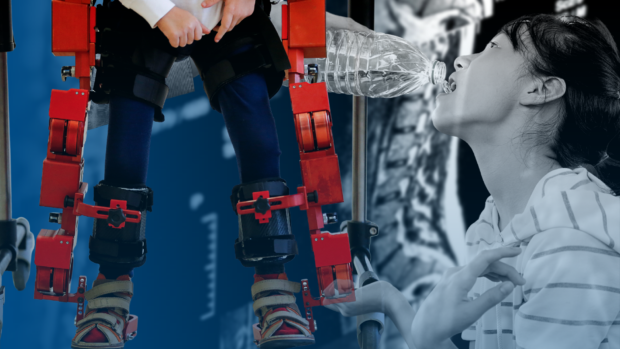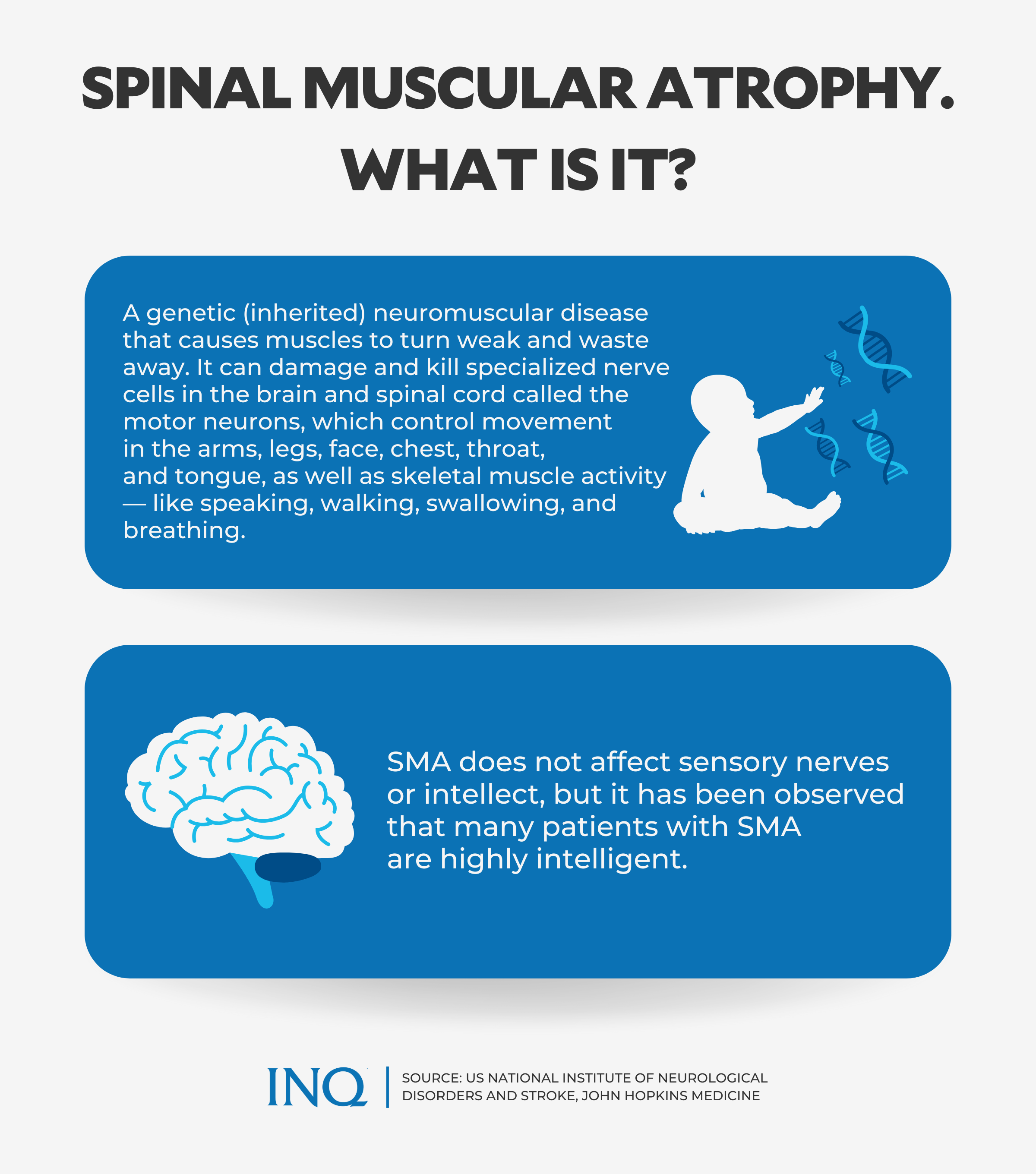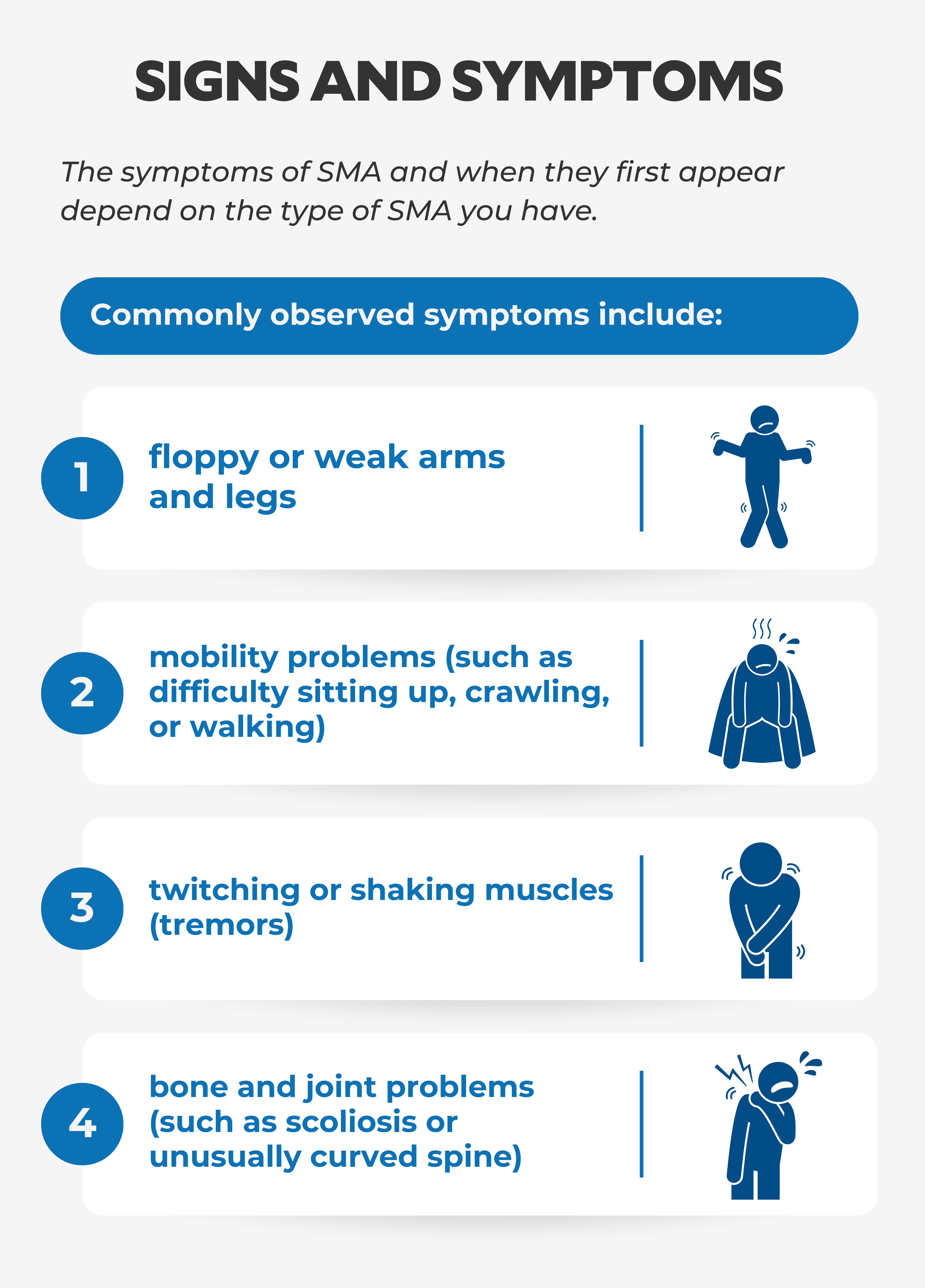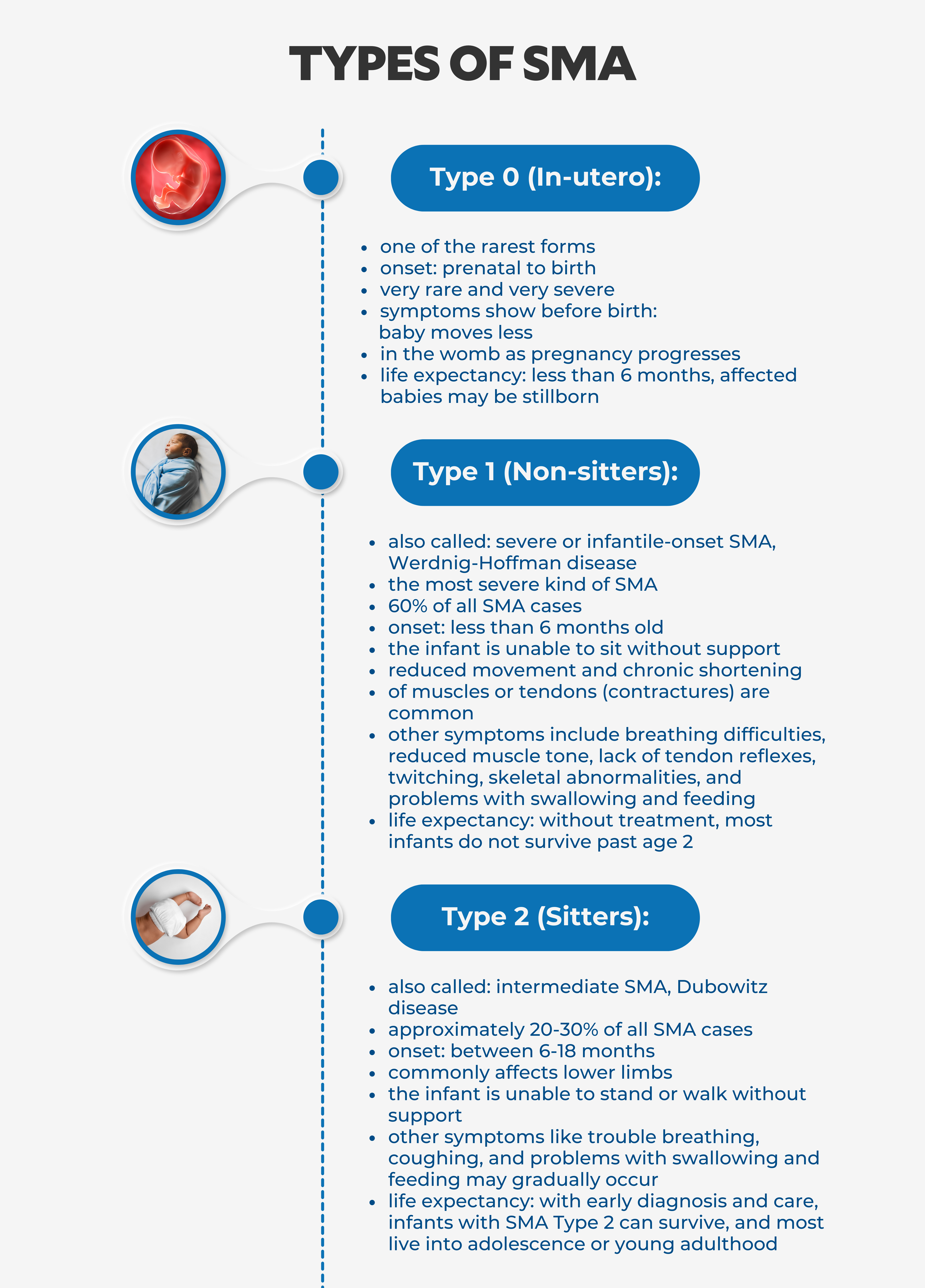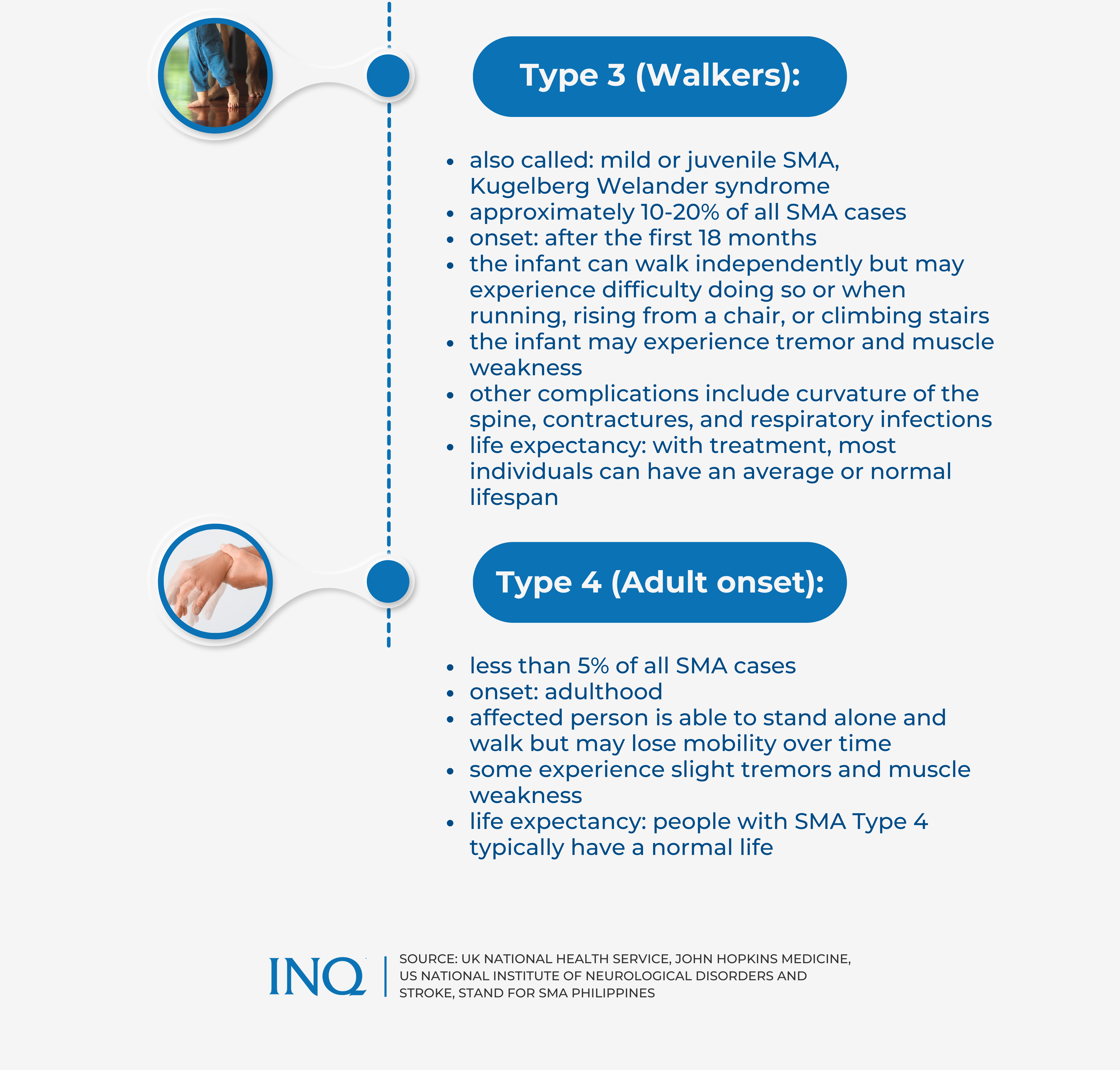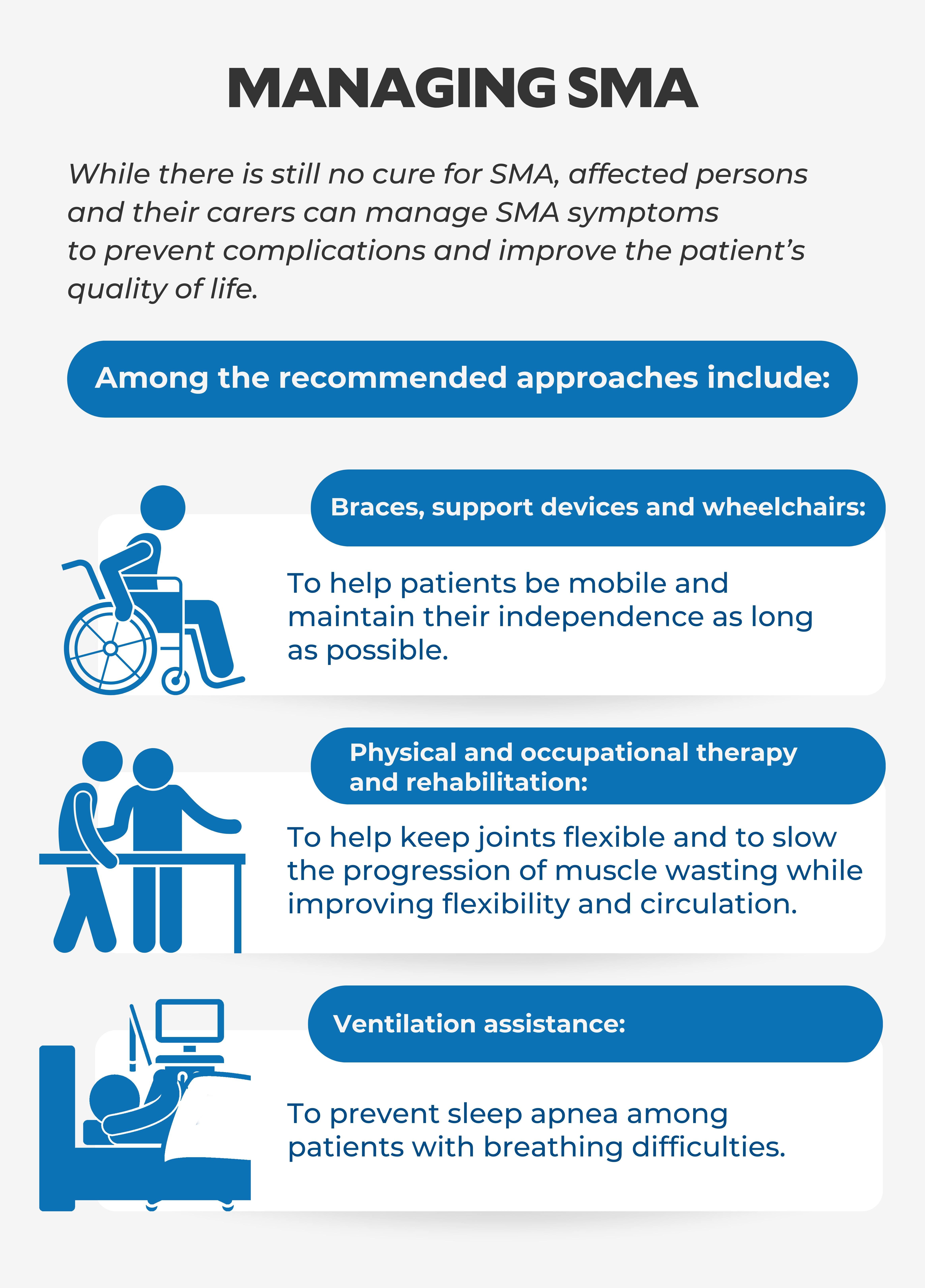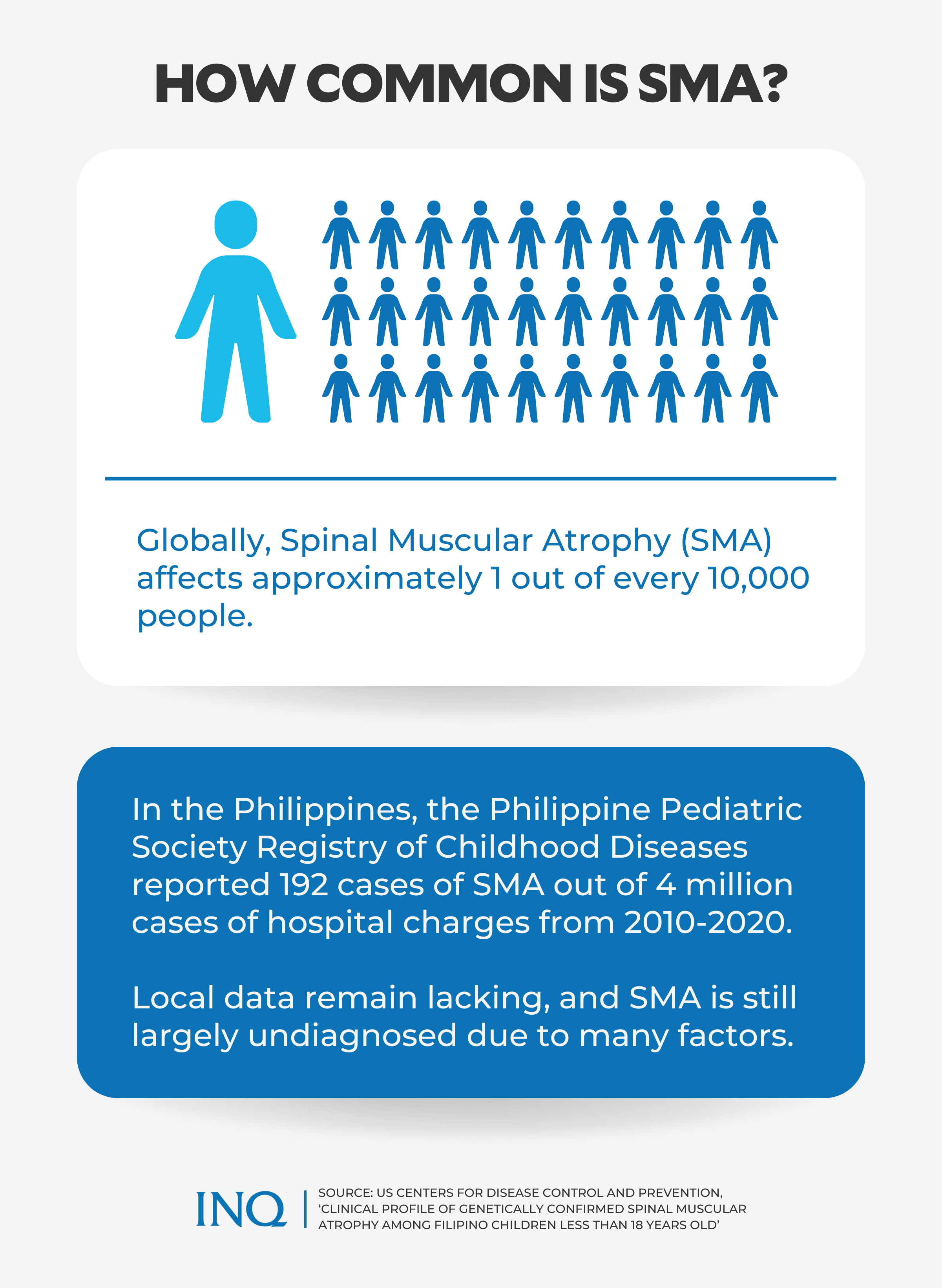Spinal Muscular Atrophy: Genetic disease that kills, maims kids but with no testing capability in PH
MANILA, Philippines—An advocate of awareness and care for Spinal Muscular Atrophy (SMA), a rare genetic disease, urged the Philippine government to make genetic testing accessible and affordable in the absence of a facility to conduct tests.
The group Stand for SMA Philippines pleaded for early detection and intervention to save many children’s lives.
According to the group, SMA is a rare and progressive neurodegenerative disease that causes muscles to become weak and waste away, affecting the person’s ability to swallow and breathe in severe cases.
Globally, SMA affects approximately 1 out of every 10,000 people and is a leading genetic cause of infant mortality.
In the Philippines, the Philippine Pediatric Society Registry of Childhood Diseases reported 192 cases of SMA out of all 4 million hospital charges from 2010-2020.
Article continues after this advertisementHowever, national data remains lacking, and the disease is still largely undiagnosed due to many factors.
Article continues after this advertisementAmong the most critical procedures to diagnose SMA is a genetic test, which is used to identify problems with the survival motor neuron 1 (SMN1) gene. It is responsible for making the SMN protein, which is necessary for normal motor neuron function.
Unfortunately, according to lead advocate Chi Datu-Bocobo, this kind of test is not even available in the Philippines. Bocobo, whose son was diagnosed with Type 2 SMA, said they had to consult a geneticist overseas to have their son properly diagnosed and treated.
“Mahal talaga ang pagpapa-test […] Sa experience namin, pinadala namin [‘yung blood sample], I believe, [to] Texas. The geneticist who helped diagnose Sancho [told us] ‘Let’s get Sancho’s blood sample, let’s have it tested in the US’,” said Bocobo in a radio interview, referring to the case of her son, Sancho.
(It’s really costly to get tested. Based on our experience, we sent the blood sample, I believe, to Texas. The geneticist who helped diagnose Sancho told us: ‘Let’s get Sancho’s blood sample. Let’s have it tested in the US’.”)
“The government has not yet given us that opportunity to have our genetic testing here. That’s my prayer,” she added.
Bocobo also stressed that newborn screening could also be helpful in the early detection of the disease.
“Meron tayong Rare Diseases Act na, hopefully, natutulungan ‘yung mga persons with disability and with rare diseases. But siguro mas kailangan pa matuunan ng pansin [at] maaral pa ‘yung bawat rare diseases,” said Bocobo.
(We have the Rare Diseases Act, which, hopefully, helps people with disabilities and those with rare diseases. But, there is a need to focus more on and learn more about each of these rare diseases.)
“Tulad ng SMA, ‘di naman kaya talaga ng mga magulang na magbayad ng treatment kaya sana the government can help us sa pag subsidize ng genetic testing ng mga bata para magkaroon din ng early treatment,” she continued.
(Parents and guardians of children diagnosed with SMA [usually] can’t afford the treatment costs. That’s why we hope the government can help us subsidize genetic testing for children so that there will also be early treatment for the disease.)
Stand for SMA Philippines noted that SMA affects families emotionally and financially. Children diagnosed with the disease are found to have medical care needs that cost 13 times more compared to those without it.
Understanding SMA
According to the US National Institute of Neurological Disorders and Stroke, SMA is a group of hereditary diseases that can damage and kill specialized nerve cells in the brain and spinal cord called the motor neurons.
Motor neurons control movement in the arms, legs, face, chest, throat, and tongue. It is also responsible for skeletal muscle functions such as speaking, walking, swallowing, and breathing.
“People with SMA don’t make enough SMN protein, and so the motor neurons shrink and die. As a result, the brain can’t control voluntary movements, especially motion in the head, neck, arms, and legs,” the Cleveland Clinic explained.
The symptoms of SMA and when they first appear depend on the type of SMA the patient has. Among the commonly observed symptoms are:
- floppy or weak arms and legs
- mobility problems (such as difficulty sitting up, crawling, or walking)
- twitching or shaking muscles (tremors)
- bone and joint problems (such as scoliosis or unusually curved spine)
- difficulty swallowing
- breathing difficulties
SMA, however, does not affect sensory nerves or intellect. Johns Hopkins Medicine noted that many patients with SMA are highly intelligent.
Different types of SMA
There are four primary types of SMA, all of which are classified depending on the age of onset.
SMA Type 1 (severe or infantile-onset SMA, also called Werdnig-Hoffman disease): The most severe kind of SMA. This develops in babies under six months old, and most severely affected children will have reduced movement and chronic shortening of muscles or tendons (contractures).
Some symptoms, such as breathing difficulties, reduced muscle tone, lack of tendon reflexes, twitching, skeletal abnormalities, and problems with swallowing and feeding, may occur in some children.
Without treatment, many affected infants do not survive past age 2.
SMA Type 2 (intermediate SMA, also called Dubowitz disease): Symptoms appear in children between six months and 18 months old. This type commonly affects the lower limbs.
The child may be able to sit up but is unable to stand or walk without help. Children may also experience respiratory difficulties.
Life expectancy is reduced, but most individuals live into adolescence or young adulthood.
SMA Type 3 (mild or juvenile SMA, also known as Kugelberg Welander syndrome): Symptoms are seen after a child’s first 18 months of life. Some people with this type don’t have signs of the disease until early adulthood.
Children with this SMA type can walk independently but may experience difficulties doing so or when running, rising from a chair, or climbing stairs.
Other complications include curvature of the spine, contractures, and respiratory infections. With treatment, most individuals can have an average lifespan.
SMA Type 4 (adult SMA): A rare adult form of SMA that doesn’t typically appear until around the age of 30. This causes mild to moderate muscle weakness and other symptoms but is not severe enough to impact the patient’s lifespan.
Citing Gillette Children’s, Stand for SMA added another type:
SMA Type 0 (In-Utero): A very rare and severe form of the disease. The onset of this type of SMA is from prenatal to birth.
Symptoms begin before birth, one of which is the decreasing movement of the baby in the womb as the pregnancy progresses.
Life expectancy is less than six months, and affected babies may be stillborn.
Johns Hopkins Medicine explained that most cases are progressive — symptoms worsen instead of improving. In general, the later the symptoms develop, the better the outcome for motor function.
Management and treatment
Currently, there is no cure for SMA. While research is ongoing to find and develop new treatment options, several treatments and support can help people with SMA have the best possible quality of life.
“While SMA cannot be prevented, medications, physical therapy, and other medical care can assist individuals in enjoying a complete and active life,” Stand for SMA explained.
“Without treatment, SMA results in worsening motor function, respiratory problems, swallowing difficulties, and orthopedic issues due to muscle weakness,” it added.
The advocacy group likewise stressed that people with SMA require multidisciplinary care, including physical therapy, occupational therapy, rehabilitation, and orthopedic, nutritional, and pulmonary support.
“Ang dami talagang doctors na kailangan puntahan. So kailangan multidisciplinary ang approach, may team of doctors talaga,” said Bocobo.
(You really need to consult a lot of doctors. A multidisciplinary approach is necessary, and there really should be a team of doctors).
Regular checkups and assessments with various health experts can help manage issues, maintain movement, and promote the well-being of SMA patients.
Other approaches include using leg and spine brace, support devices, wheelchairs, and ventilation assistance.
Support needed
During the radio interview, Bocobo briefly shared the story of an SMA warrior named “Brave Ryu,” who was born during the COVID-19 pandemic. Ryu’s parents desperately needed help to keep their son alive until they eventually found a way to go to the US.
Bocobo detailed that Ryu is now being given free treatment and management of the disease. The US government also gives his parent an allowance to ensure he gets full-time care and support.
“That’s the [kind of] support we are praying for,” said Bocobo.
“I know na may chance tayo sa Philippines to also see that. Alam mo naman dito, kulang na ‘yung pera ng maganak, ganito pa kalaki ang gastos. […] [Parents] have to give up my job to take care of [their] child,” she added.
(I know we have a chance to have that kind of support here in the Philippines. Most families here already don’t have enough money, and the treatment costs for SMA are making it worse. Parents must also give up their jobs to care for their children.)
She stressed that there is a cry for help among SMA families in the country.
Raising awareness
Drawing inspiration from his son and her family’s experience navigating SMA, as well as stories from other SMA families, Bocobo decided to form the advocacy group to raise awareness and help more children diagnosed with the disease.
“As an individual, as a mom, I’m doing what I can to help spread awareness through Stand for SMA Philippines. We put up this advocacy group, hopefully, to have a voice,” she said.
“True enough, there are parents who are reaching out to us already. Even those from different parts of the world reached out to us and said, ‘Thank God, there’s finally a group [like this]. We can help you; we can send support’,” she added.
SMA patients and families need a lot of medical equipment, including ventilators, feeding tubes, cough machines, and leg and scoliosis braces, among many others.
Bocobo said they are still in the process of turning the advocacy group into a foundation to streamline the donation process for those who are willing to help.
“We are trying to do that now, and they are welcome to help. We will find a way to accommodate all help — [whether] in cash or kind — because kids with SMA have a lot of needs,” she explained.
“For now, we can be reached through Facebook and Instagram. We’re called Stand for SMA Philippines. We’re open 24/7. We have a team of big-hearted volunteers who answer questions from SMA families and [messages] from donors,” Bocobo added.
“[Let’s] learn more about this disease. Pag usapan po natin so we can help more families.” (Let’s talk about it so we can help more families.)
TSB
RELATED STORY: Rare, deadly diseases in PH get attention from barely enforced law
